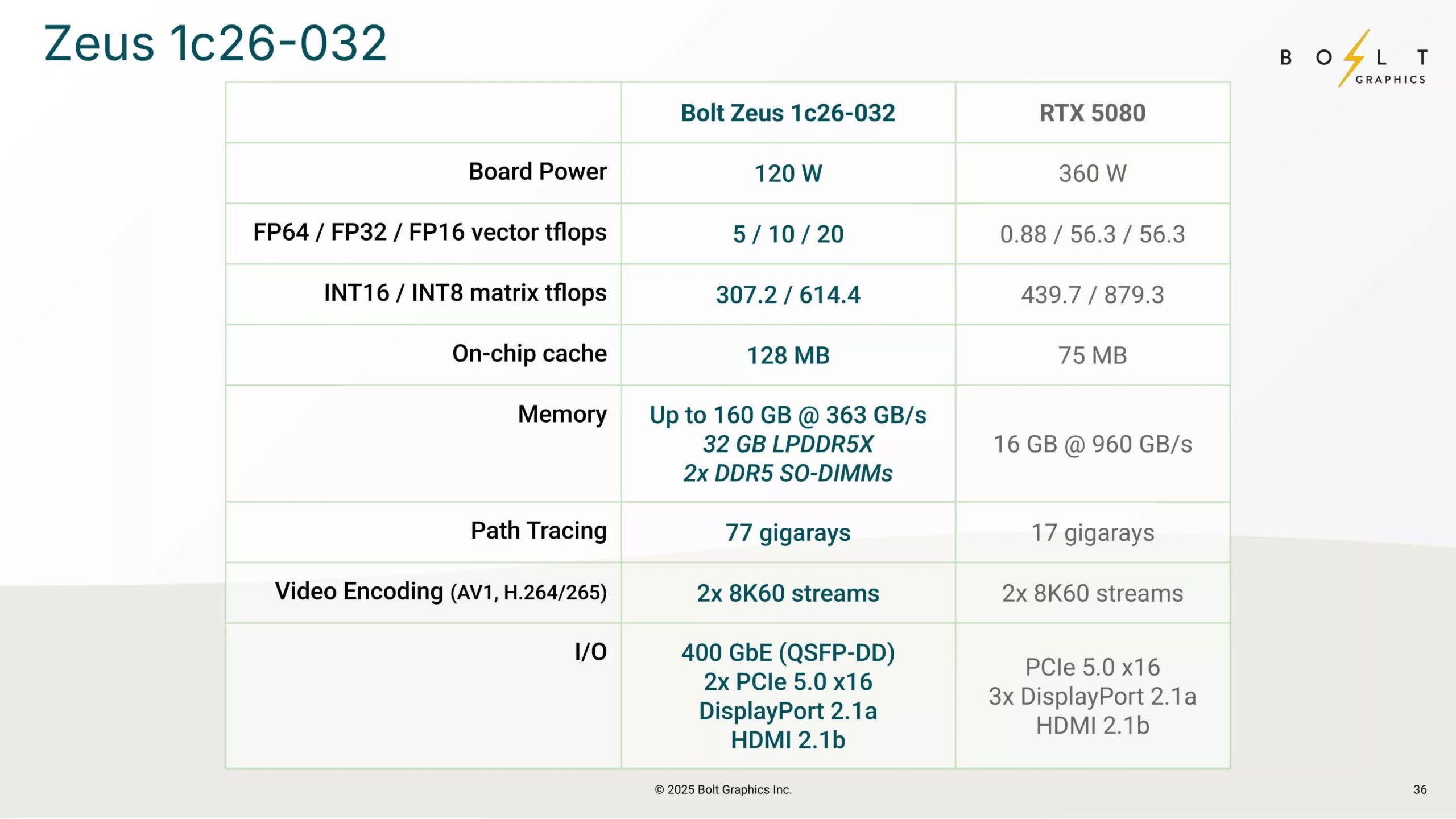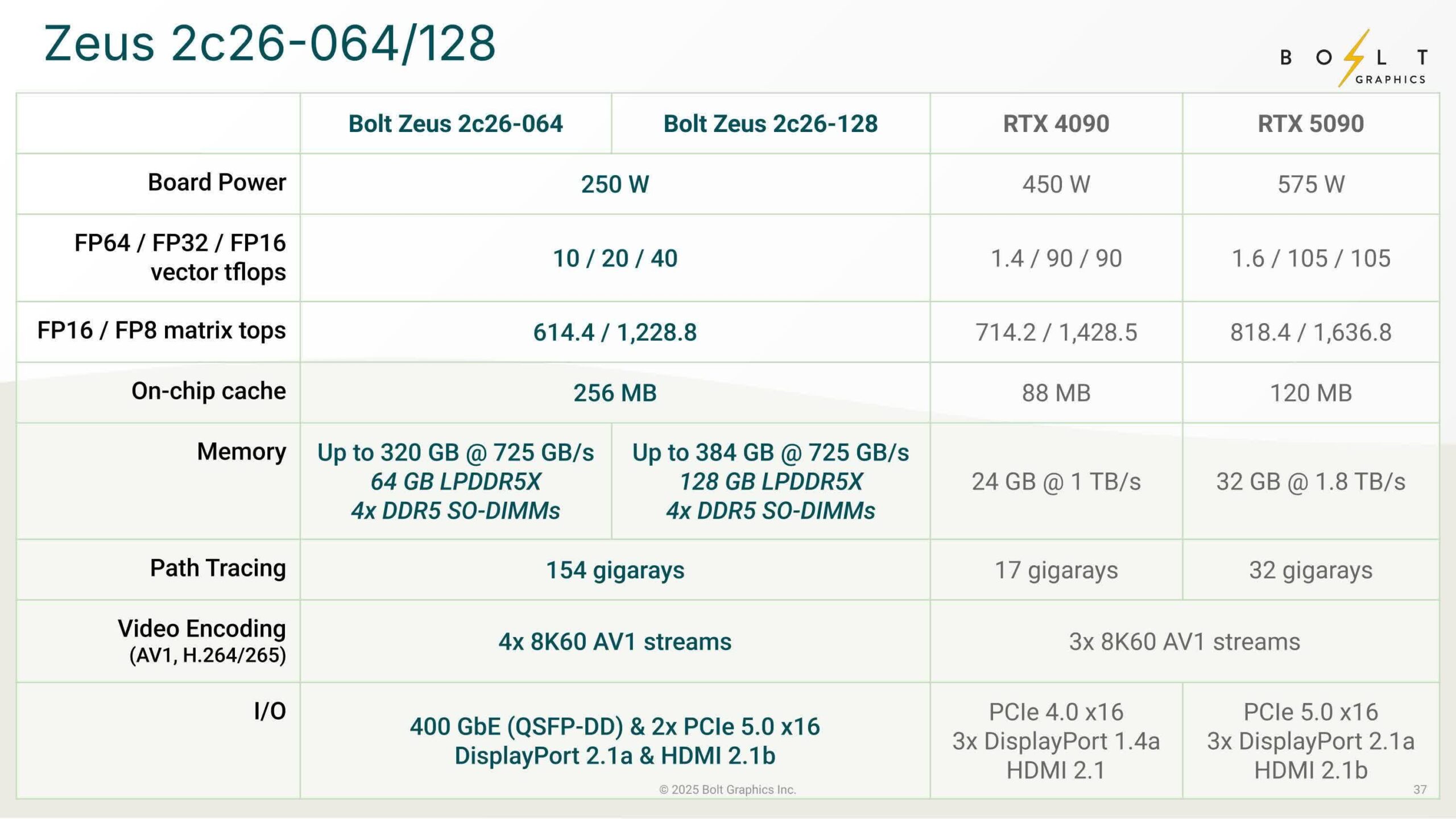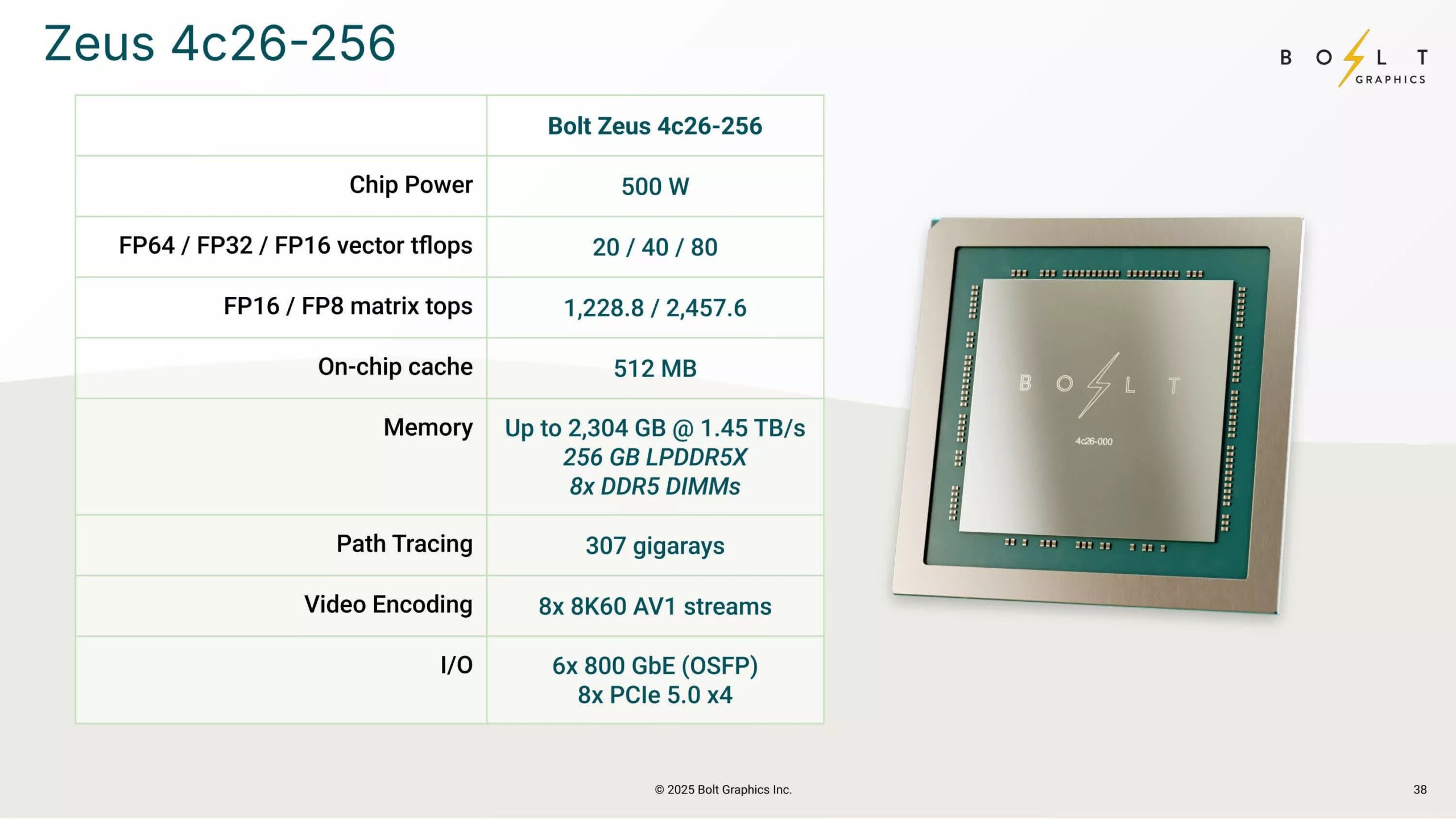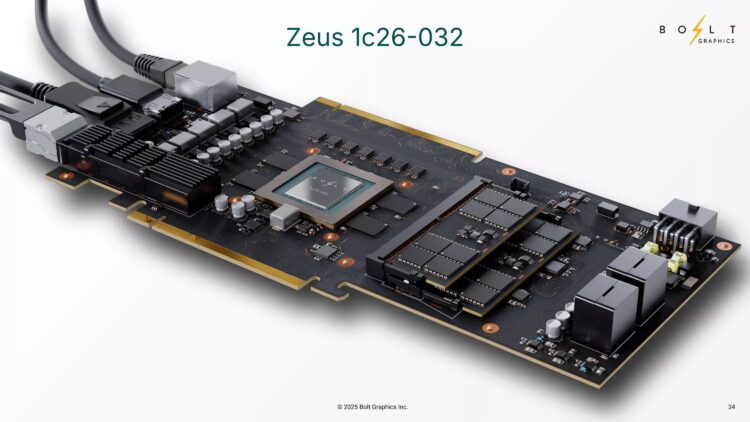It’s not every day that a tech company bursts into the GPU ring and declares is supremacy over giants like NVIDIA. But that’s exactly what Bolt Graphics, a California-based startup, did when it revealed its Zeus architecture GPU.
Bolt Graphics claims that its Zeus architecture GPU is more than capable of beating NVIDIA’s RTX 5090, thanks to the PCB’s modular nature and ability to swap out or install multiple components. On paper, it all sounds legitimate but, as these things usually go, nothing has been released by the company as of yet, so we’ll need to manage our expectations.
Firstly, one of Bolt’s initial spec sheets boasts impressive numbers, specifically with Zeus’ support for massive memory pools and GPUs that are, in orders of magnitude, much faster than the RTX 5090. A more recent specs sheet massages these claims further but interestingly, it shows lower TFLOP numbers. Also, it is choosing older VRAM formats, rather than more modern and up-to-date standards.
To elaborate, NVIDIA’s RTX 5090 run on the GDDR7 memory standard. Bolt Graphics’ Zeus architecture is running on LPDDR5X memory architecture. Read that last point properly: they aren’t using DDR5, but the low-power LPDDR5X that you find in laptops.


Not only that, Bolt Graphics’s specs sheet suggests that it is planning on releasing four GPUs: Zeus 1c-032, 2c-064, 2c-128, and 4c-256. The lowest-tier model, the 1c-032, is supposedly able to pull off 77 giga rays in path tracing, versus the RTX 5090’s 32. On top of that, it comes with 128MB Cache, along with up to 160GB of memory, depending on the configuration.
The flagship mode, the 4c-256, supposedly delivers 307 giga rays, has 512GB of Cache, and supports up to 2.3TB of VRAM. All this, while only drawing 120W of power. For another matter, Bolt Graphics took a jab at NVIDIA, saying that its Zeus GPU runs on a single 8-pin power connector that is “known to not melt”.

If this all sounds to good to be true, it’s probably because, at current, it is. A lot of Bolt Graphics’ metrics and specs sheet is theoretical, and its tests are primarily synthetic benchmarks, and not real-world gaming numbers. For that matter, product of its Zeus GPUs aren’t expected to enter production until late next year, meaning that the earliest we’ll be seeing these cards.
On the subject of gaming, it should be noted that the FP32 and FP16 TFLOP counts – both crucial for gaming – on all four Zeus GPUs are significantly lower than both the RTX 5090 and 5080. That leads us to believe that the Bolt Graphics could possibly be aiming at other graphics avenues, such as HPC, rendering, or even datacentre architecture.
(Source: Techspot)


